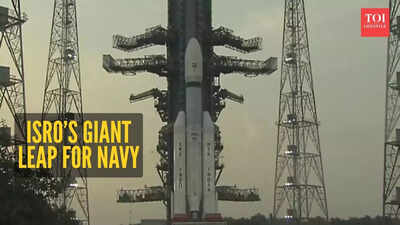Key Takeaways
- ISRO successfully launched its heaviest communication satellite GSAT-7R using the LVM3-M5 rocket
- The mission marks India’s growing independence in deploying heavy communication satellites
- GSAT-7R will provide secure naval communications across the Indian Ocean Region
- Complete indigenous technology used in both rocket and satellite
India’s space agency ISRO achieved a significant milestone with the successful launch of its LVM3-M5 rocket, carrying the 4,410 kg GSAT-7R communication satellite. The launch from Sriharikota at 5:26 pm on Sunday demonstrates India’s growing capability in heavy satellite deployment using completely indigenous technology.
The Bahubali Rocket: ISRO’s Powerhouse
Nicknamed “Bahubali” for its unmatched power, the 43.5-meter LVM3 rocket completed its journey to geosynchronous transfer orbit within just 20 minutes. Standing taller than a 14-storey building, this three-stage vehicle represents ISRO’s most capable launch system to date.
The rocket’s solid boosters from Vikram Sarabhai Space Centre provide initial thrust, while twin Vikas engines power the second stage. The final cryogenic stage, cooled to extreme temperatures, precisely places satellites into orbit. This complete indigenous development took decades of persistent effort and learning.
GSAT-7R: Naval Communications Revolution
The GSAT-7R satellite represents a major upgrade for the Indian Navy’s communication capabilities. Entirely designed and built in India, it will ensure secure, high-speed connectivity across ships, submarines, and aircraft throughout the Indian Ocean Region.
With advanced multi-band transponders, the satellite handles real-time video, voice, and data exchange during complex operations. It serves as a digital bridge between naval command centers and the fleet, replacing the older GSAT-7A series with broader coverage, stronger signal protection, and greater data capacity.
Strategic Importance for India
This launch represents more than just a technical achievement—it’s a strategic statement about India’s space capabilities. Communication satellites like GSAT-7R connect defenses, decisions, and operational domains, making uninterrupted communication the backbone of national security in modern warfare.
The mission reinforces India’s ability to independently launch heavy payloads, reducing reliance on foreign launchers and saving significant costs. As approaches, such successful missions build the foundation for more complex space ventures ahead.




